Effective construction project management software is now a vital asset to the success of any construction project. As the industry is undergoing constant evolution and witnessing the emergence of new technologies, it is imperative for construction companies to actively adopt and leverage the most advanced software solutions.
This article will highlight the best project management software for construction options for the year 2025, highlighting their features and benefits. By exploring how these management tools can streamline project processes and increase efficiency, our goal is to help construction project managers stay organized, increase productivity, and ultimately achieve project success.
What is Construction Project Management Software?
Construction project management is vital for projects of any scale, size, or complexity, serving as a crucial framework for smooth execution from planning to completion.
Construction project management software offers a collaborative platform for project managers, contractors, general contractors, architects, and stakeholders, facilitating:
- Progress monitoring
- Resource allocation
- streamlines communication
- Task scheduling
- Budget oversight
- Timeline management
- Keeps all documents in one place.
The software integrates scheduling tools, Gantt charts, task management, document sharing, communication tools, and reporting capabilities to address the specific needs of construction projects.
10 Best Project Management Software for Construction
1. e-Builder
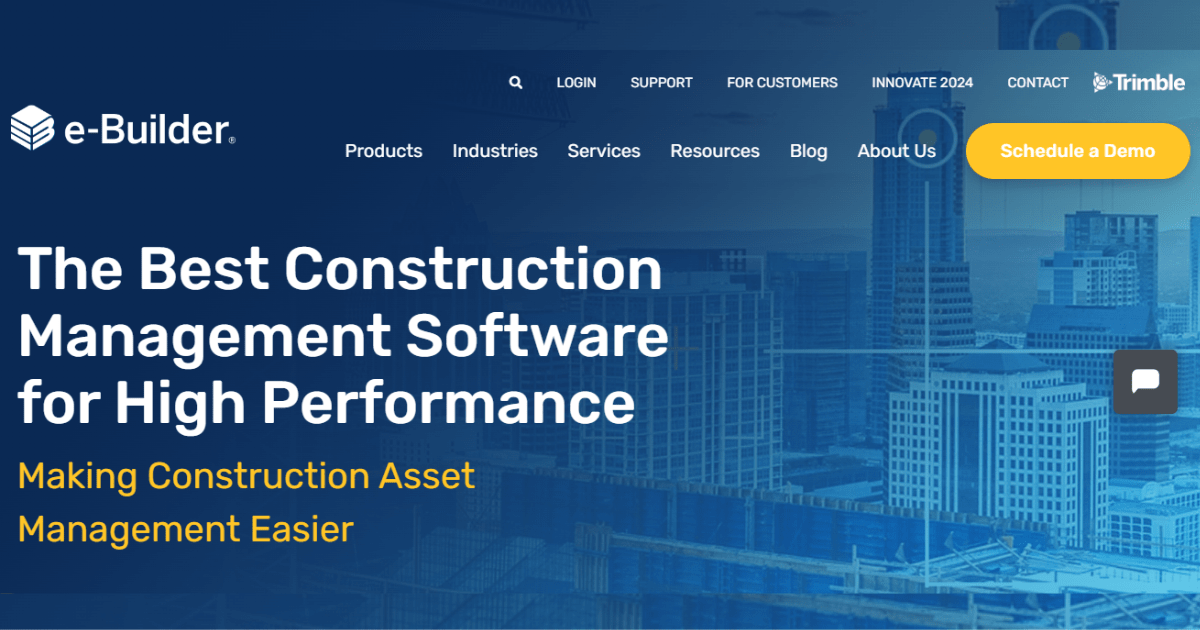
E-Builder is used by many construction companies to manage various aspects of a construction project, such as construction project scheduling, budgeting, resource allocation, communication, and document management, in one place.
How Does e-Builder Function?
It is designed to provide construction managers with a comprehensive view of project progress, costs, and timelines, and it also helps them to keep track of all the documents, plans, and other materials associated with a construction project. It can also manage subcontractors, vendors, and other external resources. E-Builder is a cloud-based solution accessible from anywhere via an internet connection. This is particularly useful for construction companies with multiple project sites or remote teams.
Some of its key benefits are:
- Ease of use
- Sophisticated workflow engine
- Visibility in project planning
2. Kahua
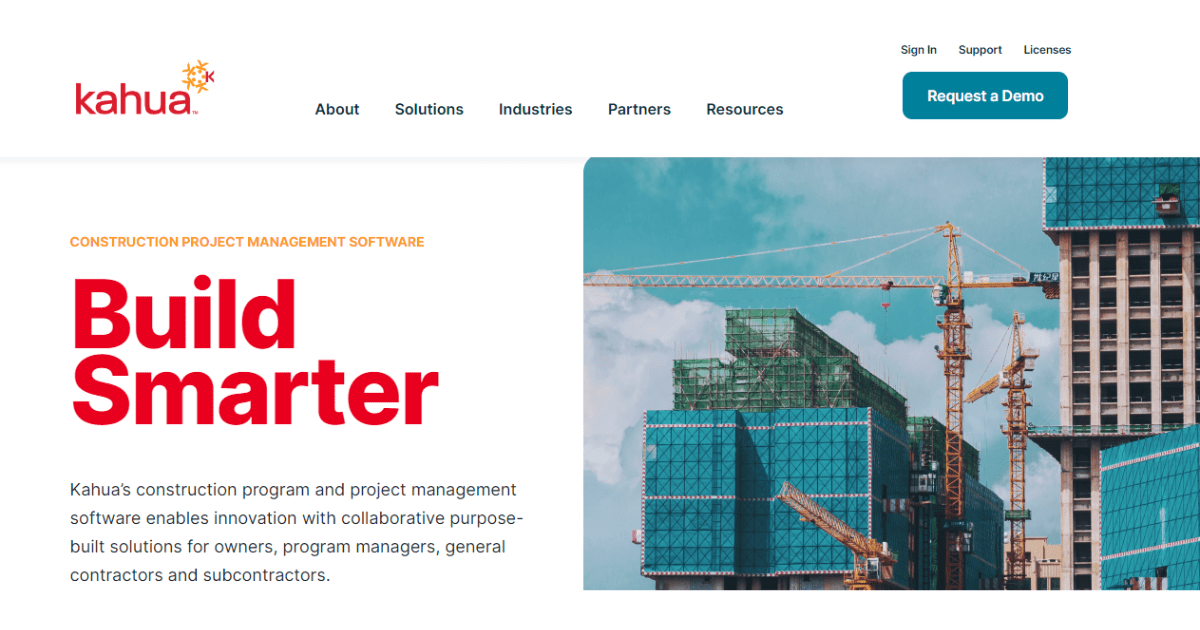
Kahua offers incredible project management solutions that boost efficiency and minimize risk from the start to the end of capital projects. It assists owners, contractors, architects, and engineers link the construction supply chain to create high-value capital projects with minimal cost-effective expenditure.
Functions of Kahua:
Kahua provides the ability to align with industry standards and support company policies, and the intuitive user interface is easy to understand and navigate. It also includes features such as dark mode, third-party app integration, app building, and core platform functions such as security, user interface, collaboration, and scalability.
Benefits of Kahua are:
- Intuitive UI
- Enhanced user adoption
- Ease of use
3. Procore
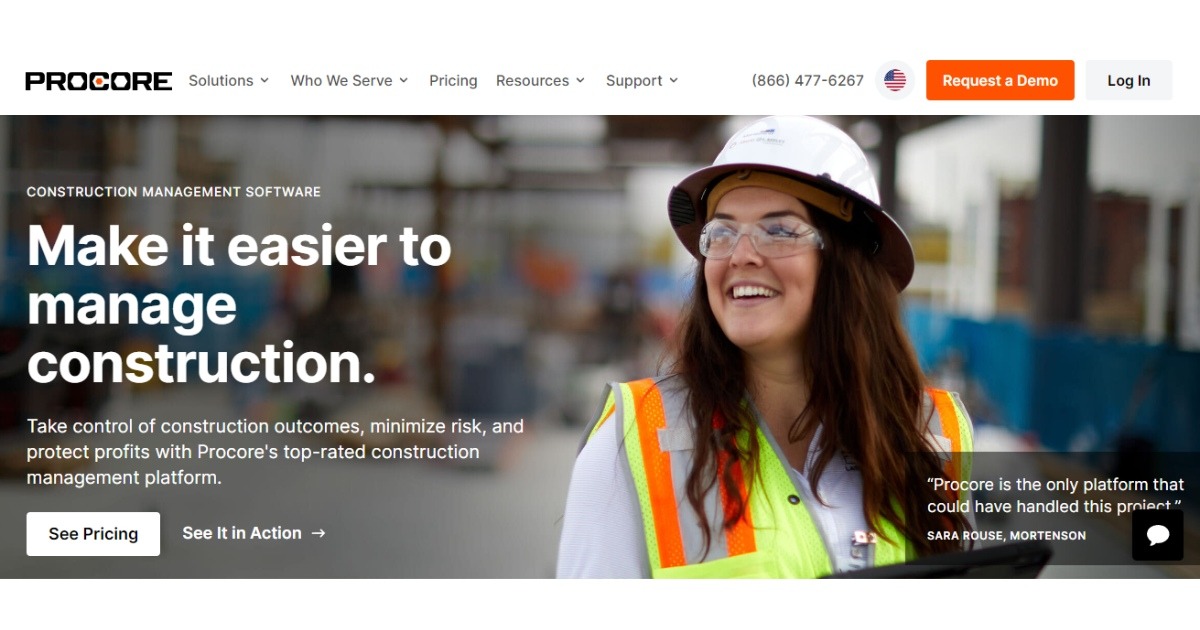
Procore is a cloud-based construction project management software for owners that assists contractors in managing projects from planning to completion. Subcontractors and suppliers may use it to track their work, submit bids and invoices, and get paid online.
How Does Procore Function?
You can create projects and invite team members to join once you have made a Procore account. The dashboard may then be used to check project status updates, submit change orders, examine vendor invoicing, and more. Contracts, design drawings, safety guidelines, and other documents can be easily uploaded and shared using the document management system. You can view your project information from any part of the world with Procore’s mobile app.
The Benefits of Using Procore:
- Increased efficiency
- Reduced costly errors
- Better communication
4. PlanGrid
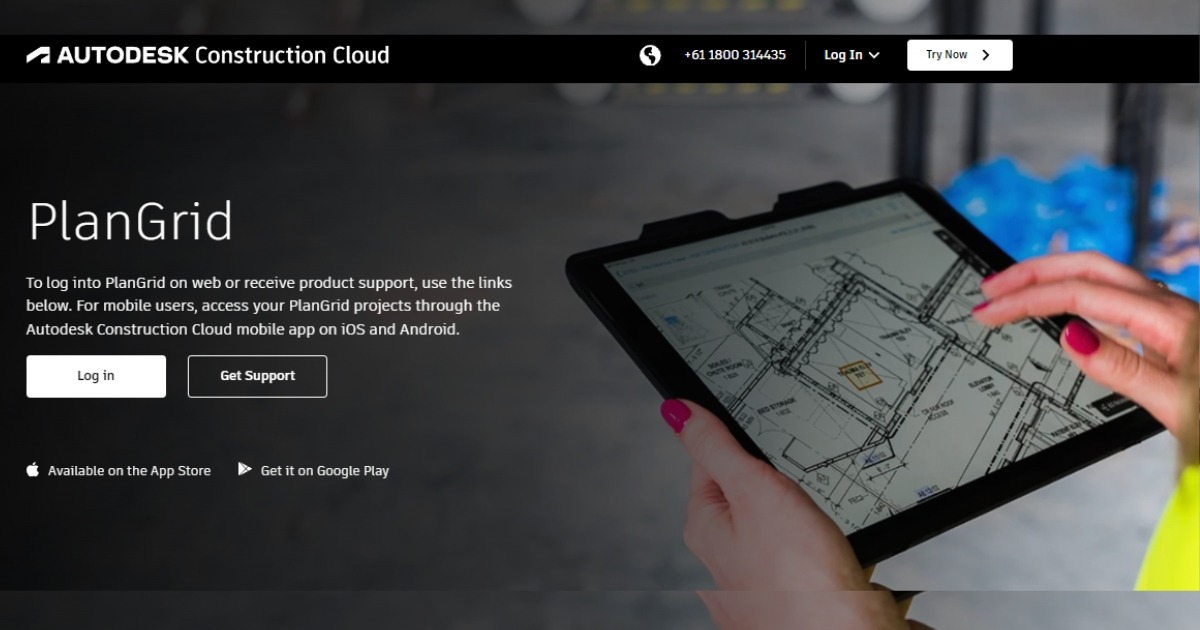
PlanGrid is a construction productivity tool that allows contractors to exchange project blueprints and manage jobs quickly and efficiently. It was founded in 2012 by two engineers who sought a better method to communicate blueprints and track progress while working on a building project.
How Does PlanGrid Work?
PlanGrid allows users to upload or import construction layouts into the application. These layouts can then be sent to team members, who can use them to mark changes, measure progress, and assign tasks. The program also contains features for calculating material prices and measuring distances, which may help contractors stay within budget.
The Benefits of Using PlanGrid:
There are many benefits of using PlanGrid, including the following:
- Speed
- Accuracy
- Cost savings
5. BuilderTrend
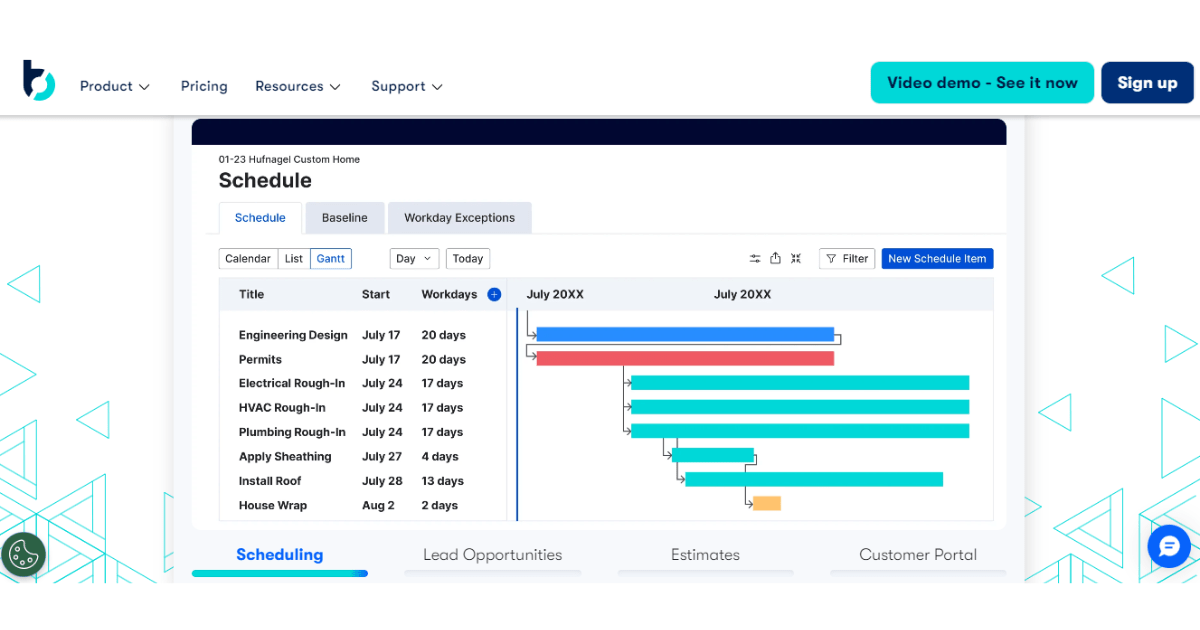
BuilderTrend is a user-friendly, cloud-based software in construction management that assists construction managers in staying organized and on top of all aspects of their projects. It makes assigning tasks, creating deadlines, and checking real-time progress simple. The program is intended to make project management more accessible, from scheduling to paying.
How Does BuilderTrend Function?
You can use the program to interact with your team and clients and exchange papers and other vital information. BuilderTrend provides a complete set of reporting tools, allowing you to track the progress of your projects quickly.
The Benefits of Using BuilderTrend:
- A comprehensive suite of features
- Easy-to-use
- Real-time updates
6. Contractor Foreman
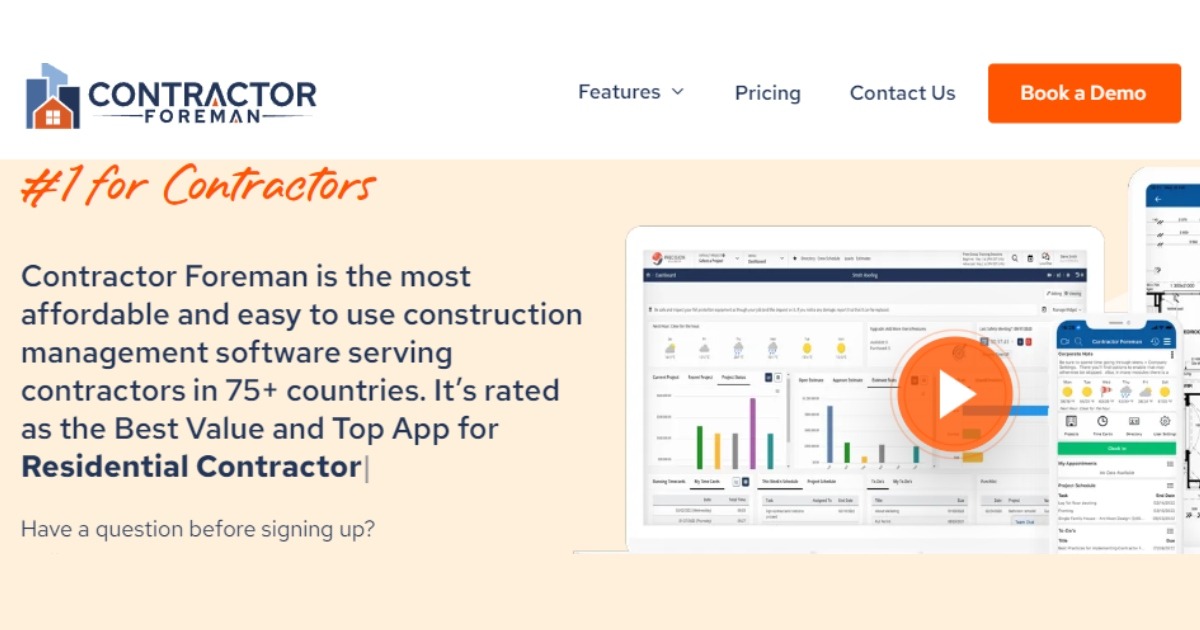
Contractor Foreman is a complete construction management software that allows you to plan, organize, and manage the expenses and resources associated with your projects.
Why Do You Need a Contractor Foreman?
The software’s user-friendly interface allows rapid planning and estimation, creation of purchase orders and invoices, tracking of task expenses, and profitability analysis. You can also use it to connect your subcontractors and suppliers, establish a customer database, and track inventories.
Thanks to the program’s cloud-based platform, you can view your data and collaborate with your team members from anywhere. This guarantees that everyone has the most recent information and can collaborate effectively.
Here are a few of Its features:
- Cost savings
- Streamlined project tracking
- Increased efficiency
7. ClickUp
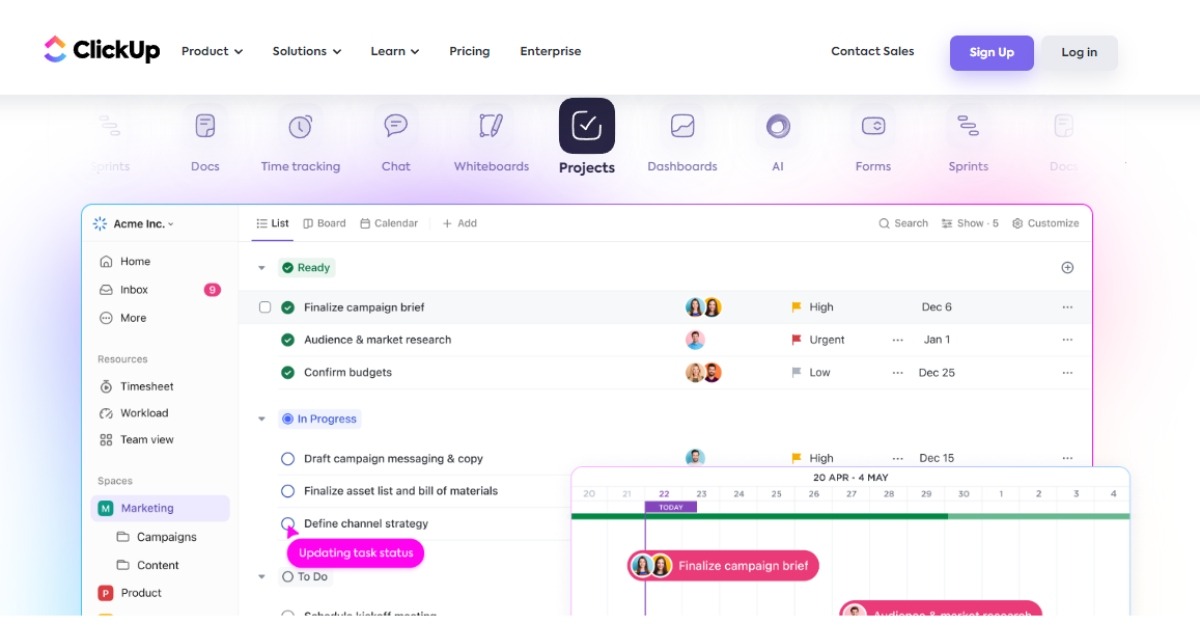
ClickUp is a project management and productivity software aiming to increase team collaboration and productivity.
How does ClickUp function?
ClickUp is a work management platform that aims to be an all-in-one app for task management. It provides various features and functionalities to help individuals and teams stay organized and collaborate effectively.
As a project manager, you can use its wide range of features; it offers a comprehensive solution for organizing tasks, managing projects, and tracking progress.
The benefits of using ClickUp
- User-friendly interface with drag-and-drop functionality.
- Highly customizable to adapt to different workflow needs.
- Offers a free plan with many essential features.
- Provides mobile apps for iOS and Android.
8. OrangeScrum
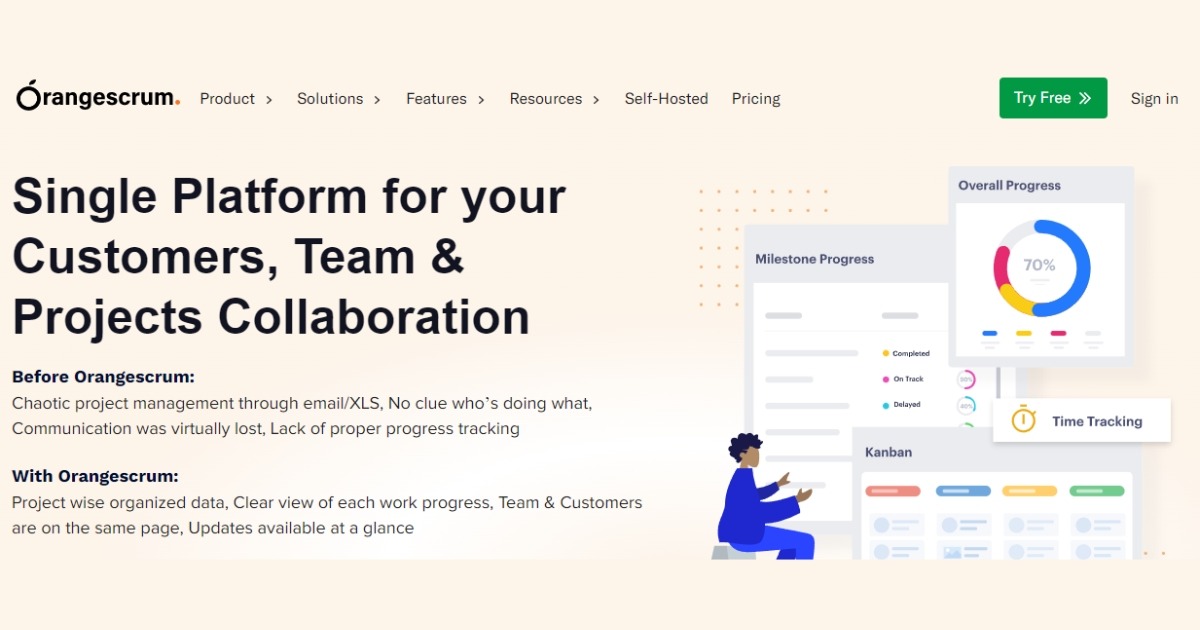
OrangeScrum is an open-source project management software that helps businesses streamline tasks and improve project visibility. It offers many features to enhance team collaboration, task prioritization, and project monitoring.
How does OrangeScrum function?
It creates, assigns, and tracks tasks and projects. It also helps project managers manage resources, Efficiently allocating resources to projects and tracking availability. It also helps track time by monitoring time spent on tasks and generating timesheets.
Moreover, it helps in collaboration by facilitating team collaboration through discussions and document sharing.
The benefits of using OrangeScrum
- Open-source software, allowing for customization and tailor-made solutions.
- User-friendly interface with intuitive navigation.
- Affordable pricing plans for small teams.
- Provides self-hosted options for enhanced data control.
9. Asana
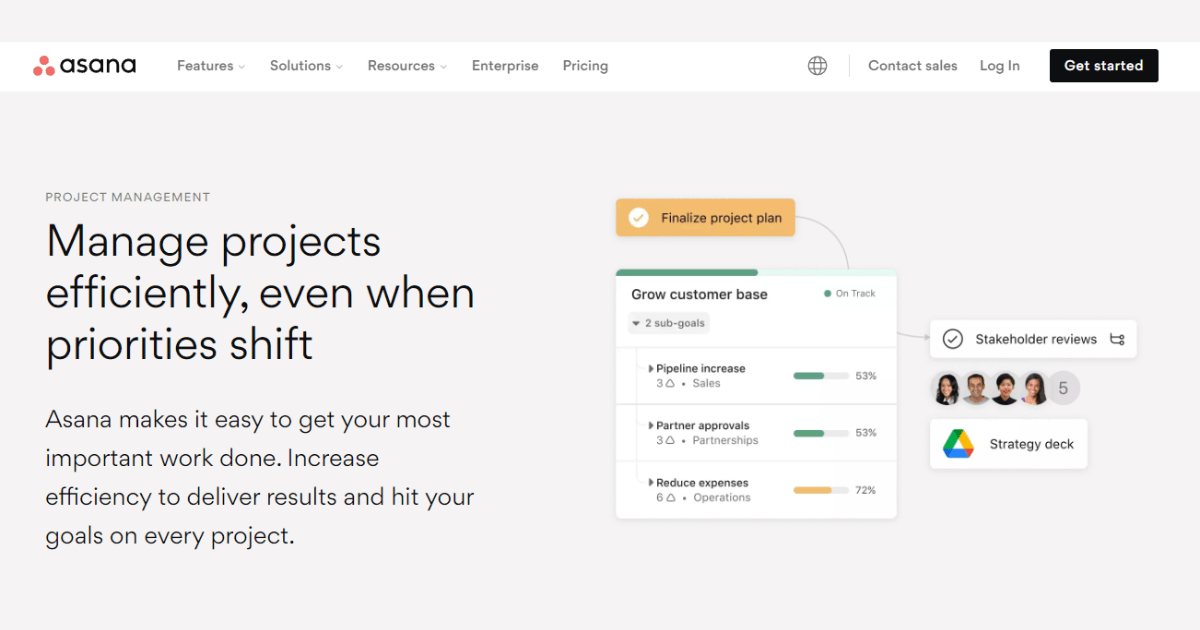
Asana is a popular project management software designed to help teams organize and manage their work effectively. It offers many features and functionalities to enhance collaboration and streamline project workflows to manage construction projects.
How does Asana function?
Apart from creating & assigning tasks, Asana offers Kanban boards and timelines, which help a project manager visualize project progress with visual task management tools. It also seamlessly integrates with popular apps like Slack, G Suite, and Jira. The workflow automation tool of Asana automates repetitive tasks with advanced automation features.
The benefits of using Asana
User-friendly interface with intuitive design.
- Powerful task management features suitable for different workflows.
- Extensive system integrations with popular software and tools.
- Offers mobile apps for on-the-go access.
10. TeamGantt
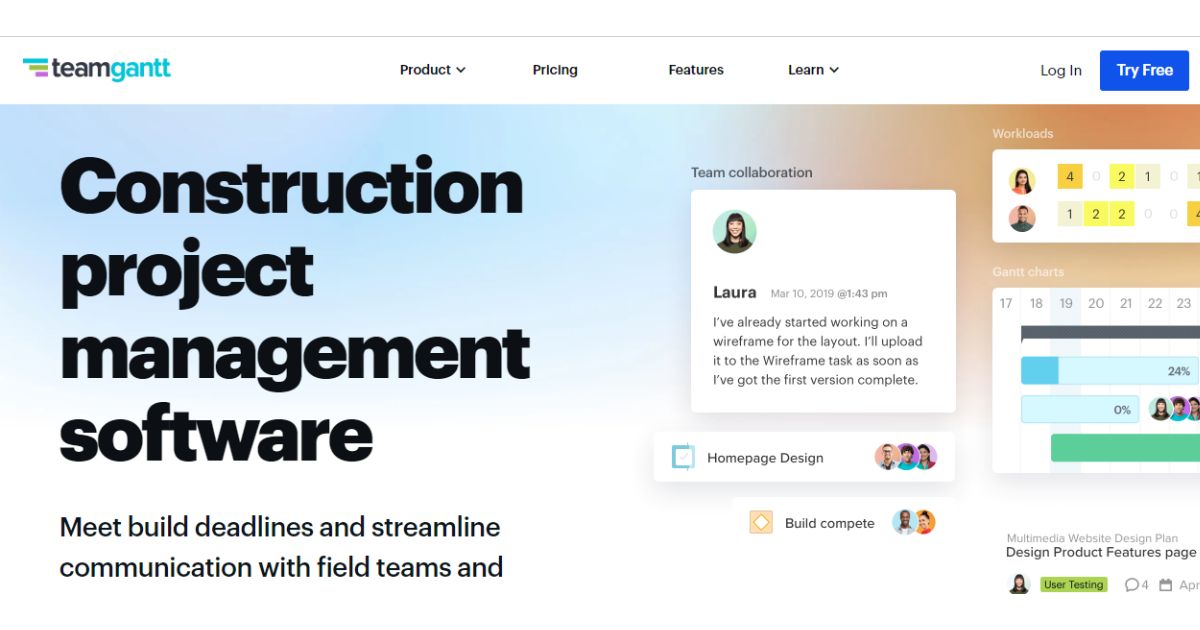
TeamGantt is a cloud-based construction project management software and Gantt chart solution designed to meet the needs of small, medium-sized, and large enterprises. It has many project collaboration tools, including collaborative Gantt charts, time-tracking capabilities, seamless file sharing, and efficient task-level communication features.
How does TeamGantt function?
TeamGantt is a project management tool enabling teams to create Gantt charts, manage tasks, collaborate, track time, share files, and monitor project progress. It simplifies project planning and execution by providing a visual and collaborative platform.
The benefits of using TeamGantt
- Visual Project Planning
- Efficient Task Management
- Enhanced Collaboration
- Time Tracking
- Real-time Progress Monitoring
- Data-driven Insights
- Project Scheduling
Related: 10 Best Construction Scheduling Software in 2025
Benefits of Using Construction Project Management Software
Enhanced Productivity: Streamlining project management processes improves productivity by automating repetitive tasks, reducing manual paperwork, and facilitating real-time collaboration.
Improved Communication: Software for construction management enables effective communication between team members, clients, and stakeholders through centralized communication channels, reducing miscommunications and delays.
Better Project Planning and Control: The software provides comprehensive tools for project scheduling, budgeting, and resource management, enabling project managers to plan, monitor effectively, and control project activities, leading to successful project completion.
Increased Efficiency: A centralized document management and version control platform eliminates the need for physical paperwork, reducing the risk of information loss and improving overall project efficiency.
Enhanced Collaboration: Project management tools for construction enables seamless collaboration between project stakeholders, promoting better teamwork, knowledge sharing, and decision-making.
Improved Project Cost Control: By tracking project expenses, generating cost reports, and managing change orders, the software helps project managers ensure better cost control and increased project profitability.
What Features to Search for in Construction Project Management Software?

Project Scheduling: A robust construction project management software should offer comprehensive scheduling capabilities, including the ability to create and manage project timelines, set dependencies, assign resources, track progress, and identify critical path activities.
Document Management: The software should provide a secure and centralized repository for storing and managing project-related documents, drawings, contracts, and other important files. It should support version control, collaboration, and easy retrieval of documents.
Communication and Collaboration: Effective communication and collaboration are vital in the construction industry. Look for software that facilitates seamless communication between team members, clients, and stakeholders through features such as instant messaging, discussion forums, email integration, and document sharing.
Budgeting and Cost Control: Construction projects often involve complex management budgets, cost estimates, and financial planning. The software should offer tools for creating budgets, tracking expenses, generating cost reports, and managing change orders to ensure project profitability and effective use of accounting software..
Resource Management: Efficient allocation and management of resources are crucial for successful project completion. Look for software that allows you to assign and track resources, schedule equipment and material deliveries, manage subcontractors, and optimize resource utilization.
Risk Management: Construction projects are inherently risky, and it is essential to have a software solution that helps identify, assess, and mitigate project risks. The software should provide features for capturing and monitoring risks, implementing risk mitigation strategies, and maintaining a risk register.
How does OnIndus help you in Construction Project Management?
OnIndus plays a vital role in construction project management by addressing key challenges that construction projects often encounter, such as scope development, change management, team alignment, schedule management, and contractor confidence. To tackle these challenges effectively, it’s important to partner with a company like OnIndus, which specializes in meeting the project’s unique needs and objectives.
OnIndus simplifies construction project management by offering expert guidance and support throughout the project lifecycle. OnIndus provides a central platform for all project information, enhancing communication and collaboration among project stakeholders, which enables them to work closely together.
Conclusion
In conclusion, Construction management software can significantly help your projects. It makes it easier for team members to collaborate, keeps things organized like project schedules and budgets, and helps people work together by sharing files effortlessly and seamlessly. It also reduces the chance of mistakes and misunderstandings by putting all project information together. Additionally, construction management software produces smoother projects by doing some tasks automatically and keeping all the project details in one easy-to-find spot.
FAQs
1. What is construction management software?
Construction management software is a digital tool that is used to facilitate the planning, coordination, and execution of construction projects. It streamlines the management of tasks, budgets, documents, and teams’ timelines. The best construction management software combines collaboration, scheduling, and reporting tools for smooth project delivery. It is important not only for small businesses but also for large enterprises that want to achieve optimized project control.
2.What is the best project management software for construction?
The best construction project management software integrates powerful functions such as real-time collaboration, budget tracking, and document control to ease complex work. Tools – like OnIndus – connect to existing systems and provide scalable solutions to all project sizes. When choosing the best construction management software, you should seek a customized software system that suits your capital project needs.
3.How can construction management software benefit small businesses?
Construction management software benefits capital projects by improving efficiency, reducing manual errors, and streamlining team communication. It offers centralized control over budgets, schedules, and resources, allowing capital project managers to manage larger projects. The best construction management software supports scalability, making it ideal for growing companies looking to expand their project management capabilities.
4.What features should businesses look for in construction management software?
Companies should seek construction management software features of real-time project tracking, document management, cost estimation, and compatibility with the existing tools. The best construction project management software has user-friendly dashboards, automated workflows, and accessibility from a mobile phone. These functions provide improved visibility and control, particularly for teams working on several construction software and complicated projects
5. How much does construction project management software cost?
The cost of construction project management software varies hugely according to functionality, the number of features, and customization needed. Pricing models vary, with some of them charging subscription fees on a monthly basis, while others have enterprise-level packages. Comparing features and scalability, based on your budget, suffices in ascertaining the most suitable building project management software of choice.

